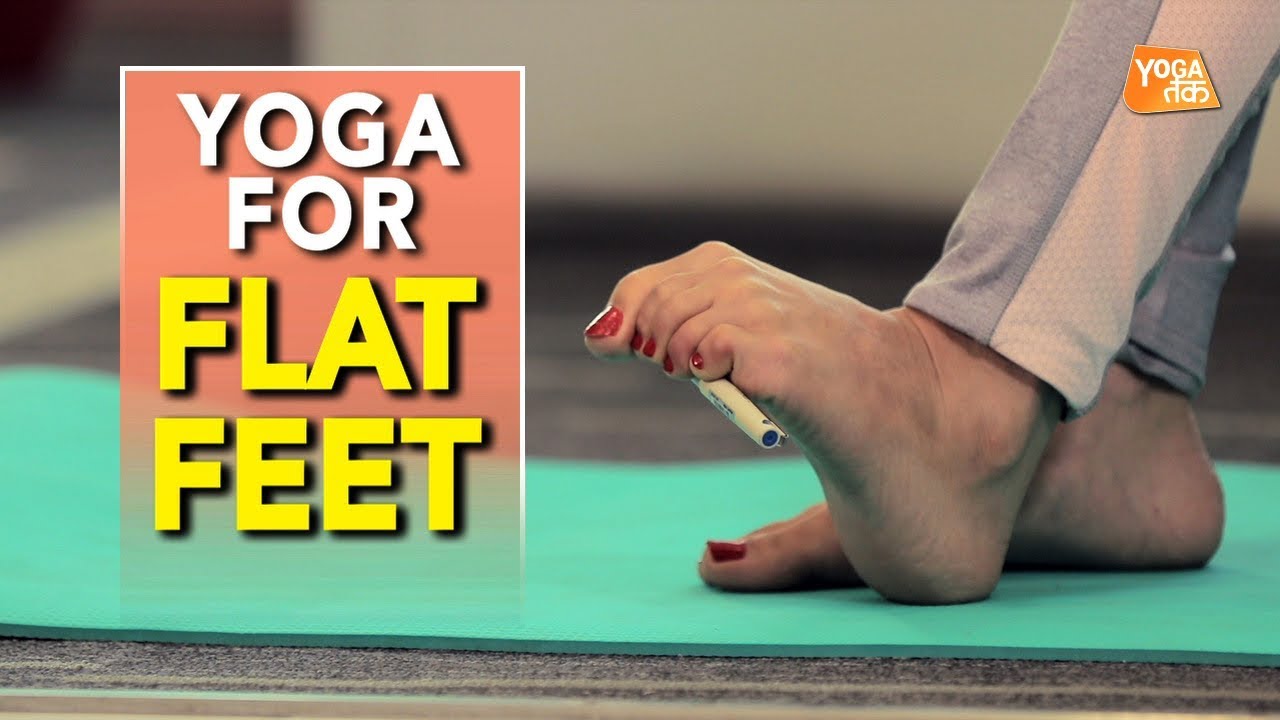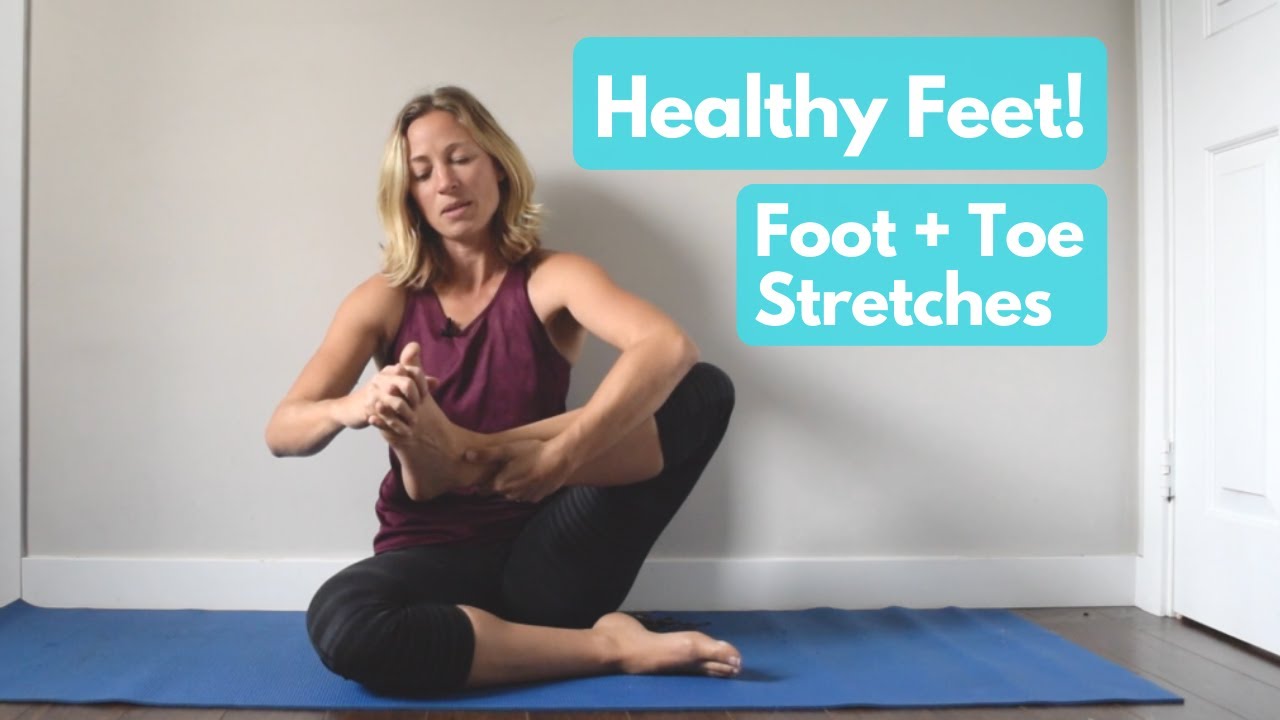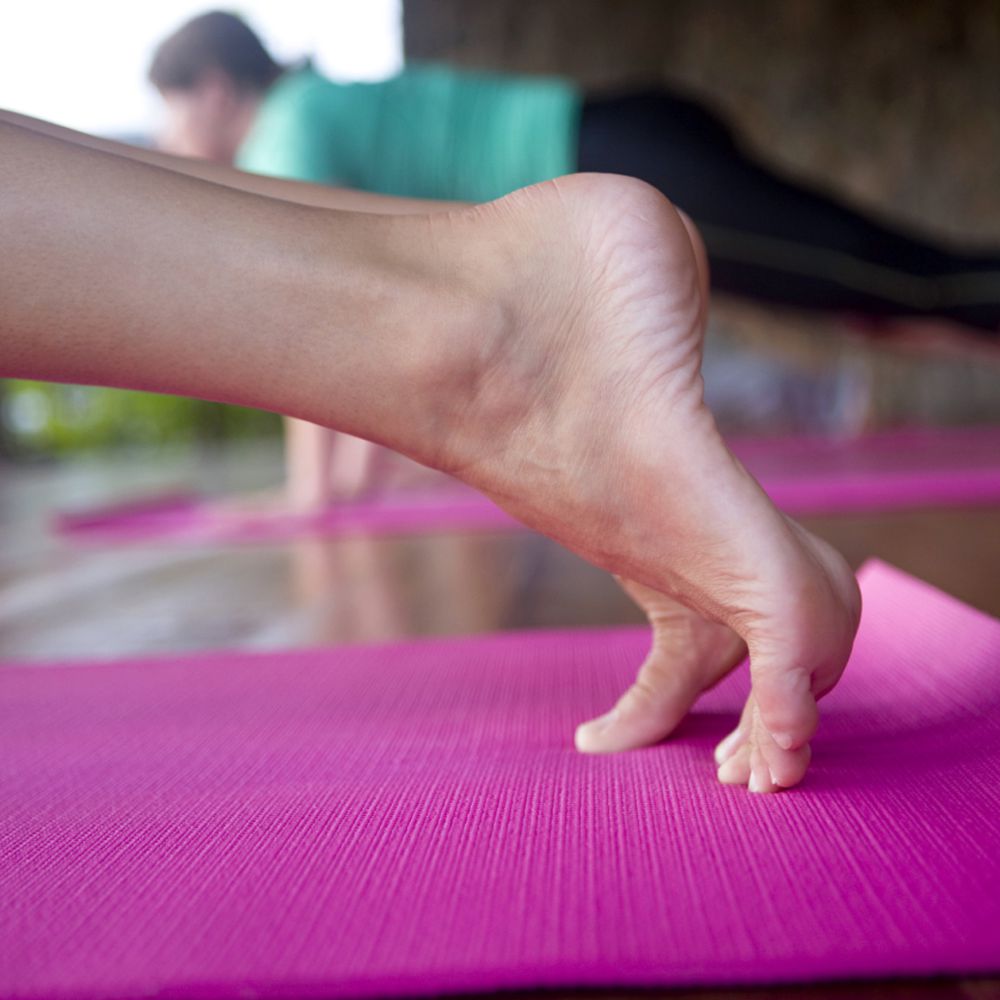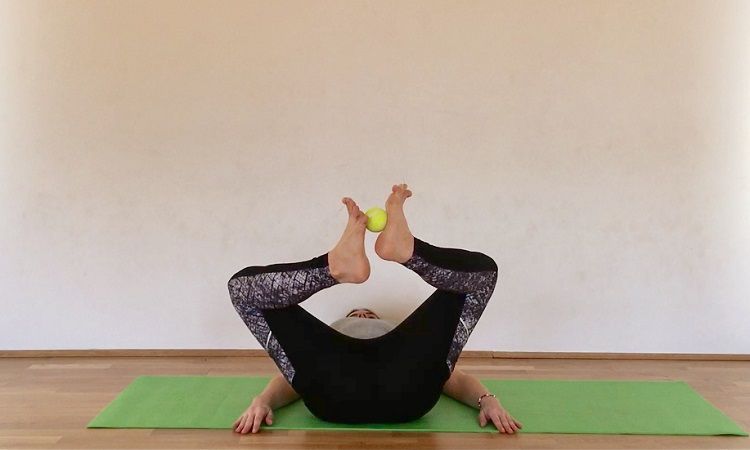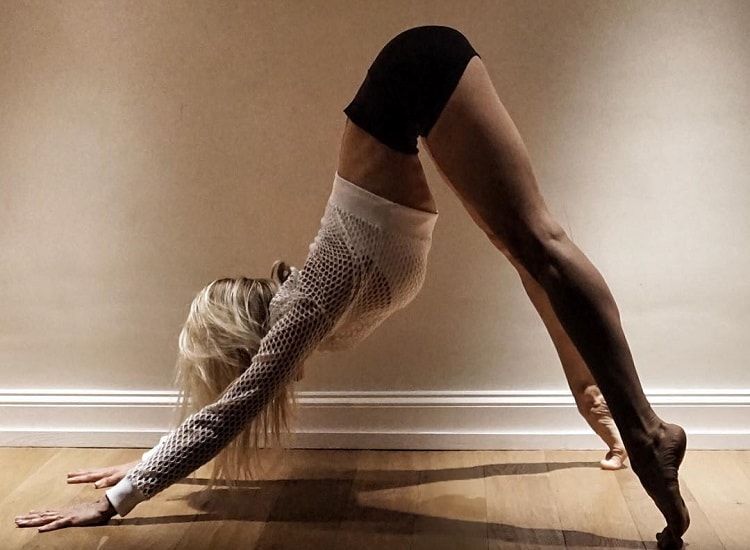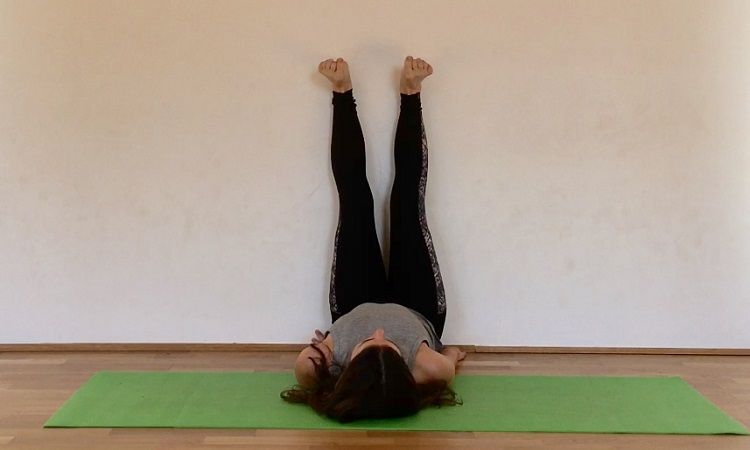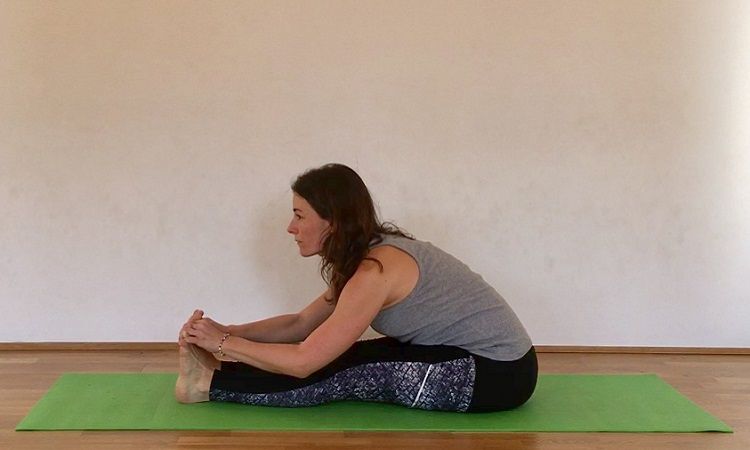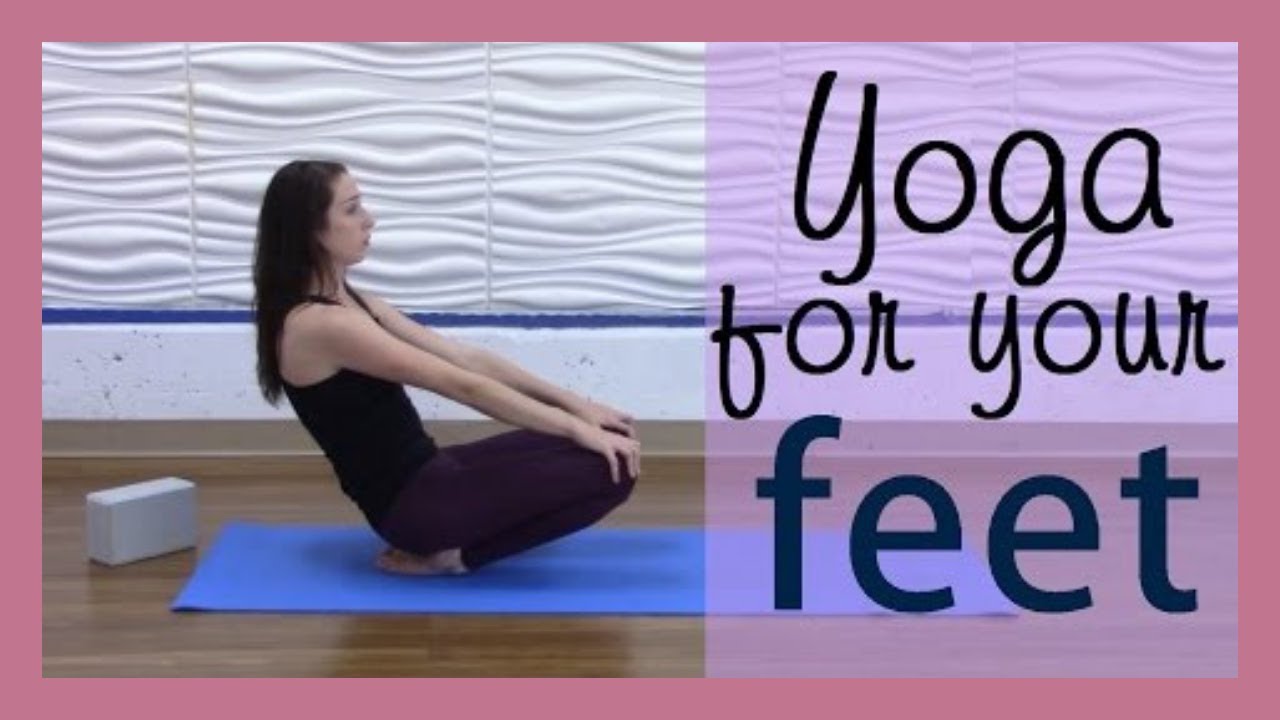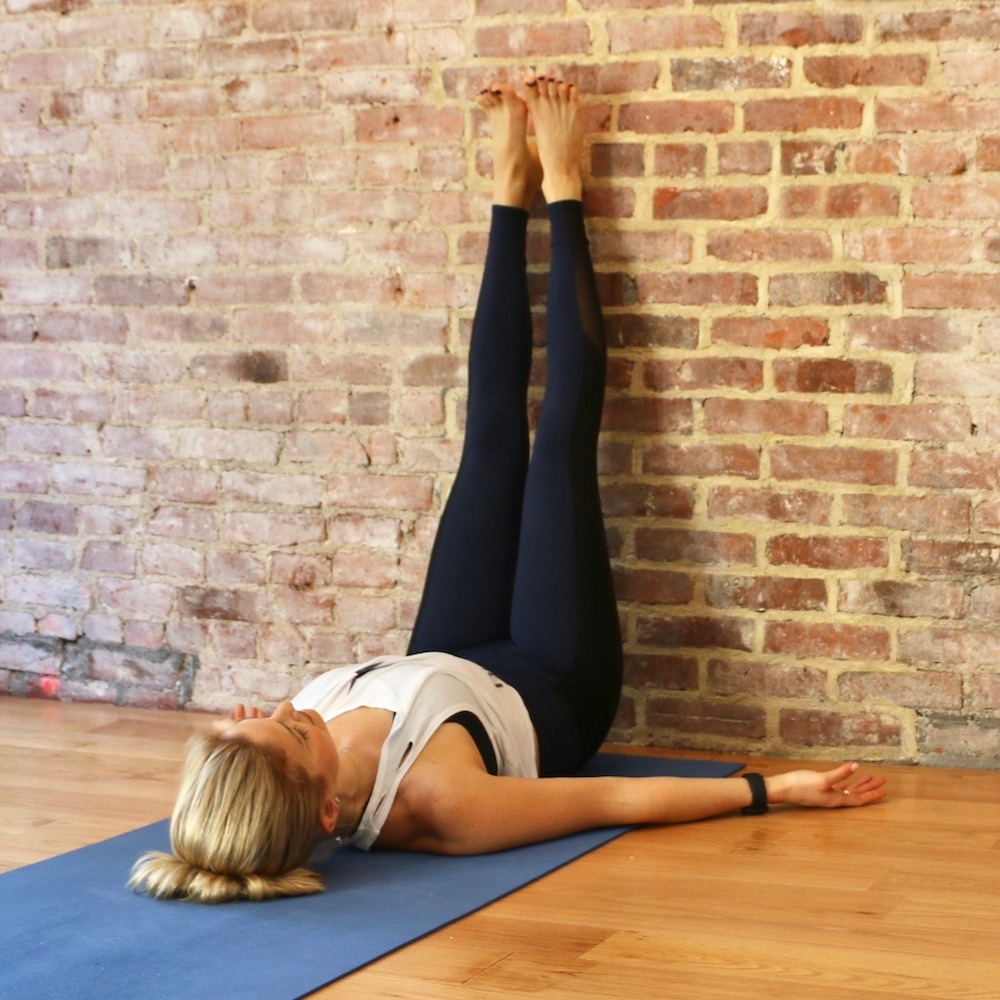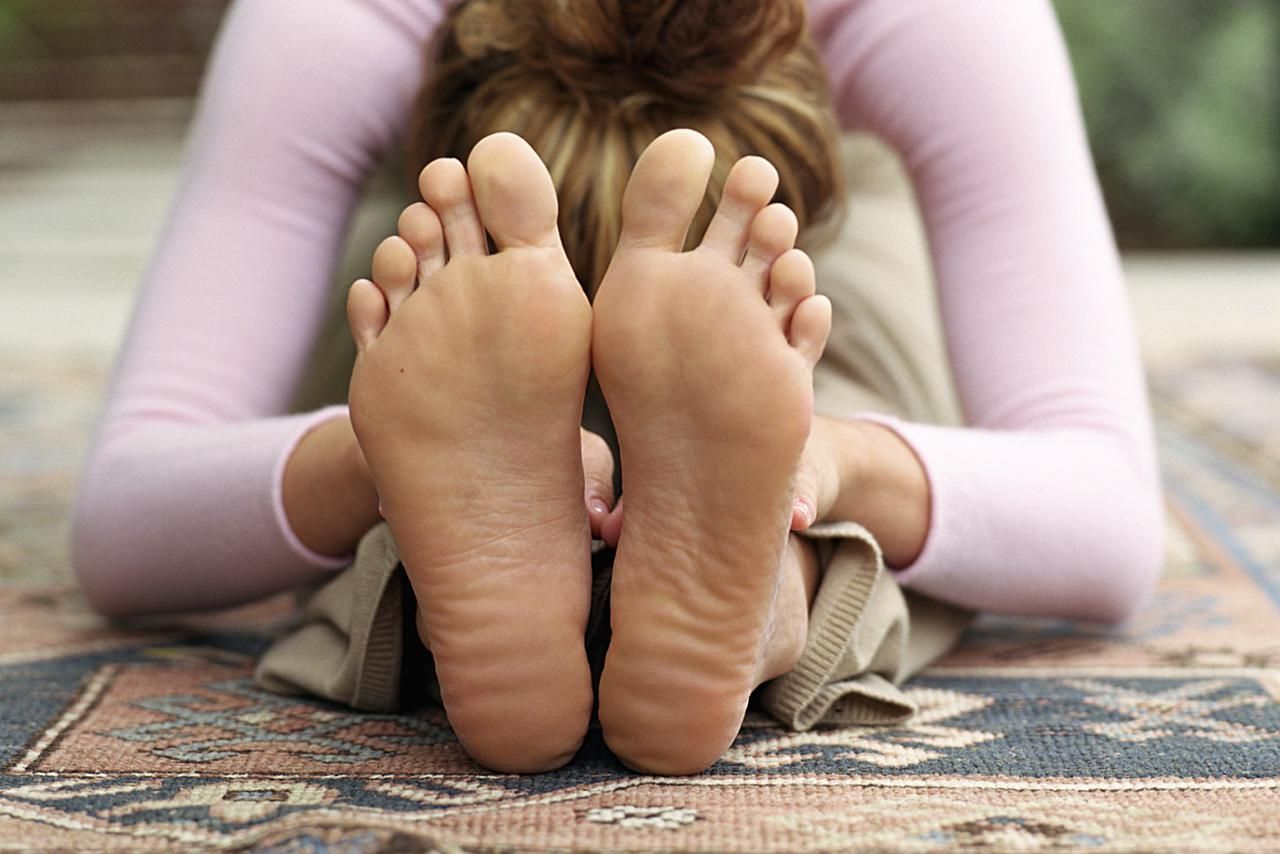A. Relieve Pain with Yoga for Foot Care
Yoga for foot care: soothe your feet with these yoga postures that will help strengthen your feet, relieve pain and improve overall foot health.
Despite what our feet do for us, we don’t do much for them in return. We tuck them in tight shoes, hitting them all day and generally ignoring them, unless they cause us serious problems. The result is that at some point in life 7 out of 10 people will have foot problems, many of which are completely preventable.
1. See also the Best Exercises for Healthy Feet
Robert Kornfeld, a holistic podiatrist, says he has seen it all: people limping with inflamed nodular pads and hammer fingers, the dull throbbing of tendonitis, the painful soles of plantar fasciitis.
These are not just minor complaints. Some foot problems can alter the structure of the foot and cause pain in other parts of the body. “I sing this song for my patients,” says Kornfeld. “The foot bone is connected to the leg bone …” Experts say that one of the most important reasons for treating foot problems early is to prevent them from throwing their knees. Imbalanced hips, back and shoulders.
And one of the best ways to care for your feet is through yoga. “I recommend that all my patients start yoga immediately,” says Kornfeld. “When you treat foot problems with yoga, you end up treating back pain, hip pain and all kinds of structural problems. Not only does it stretch your muscles and give them more freedom of movement, but it also helps to cure the underlying problem of inflammation. ”
In fact, yoga provides your feet with healthy exercise that is rarely done otherwise. “You couldn’t ask for better tools to wake your feet,” says yoga teacher Rodney Yee. Below are some expert tips on how yoga can best be used to prevent or treat foot pain.
2. Draw your attention to your feet
The first place to become more aware of your feet is in standing postures, such as tadasana (mountain posture). Before you start the posture, think about how you stand naturally, suggests Janice Gates, a specialist in therapeutic yoga. Do you tend to put the weight on the inner edge of the foot, which causes the legs to bend inward, or on the outer edge, which causes the knees to bend outward? (If you can’t see it, check the bottom of your shoes. You can often tell by the way the soles are worn.)
Watch as your weight decreases and then play with it by rocking back and forth, lifting your toes first and then your heels. If you tend to sit forward a little, try to shift your weight back a little and vice versa.
Then try to lift the arch of the foot while pressing the edges. This creates the feeling of being rooted in the earth and raising the energy from the center to form the Mula Bandha (root block). “Sometimes I use the image of a surprise box: collapse and then jump,” says Gates. “You push down to get up.” Once you start, you will be more attentive to your feet and distribute your weight better on a daily basis.
3. Start working your toes
A great way to train stiff and underutilized feet is to work on the toe joints, which in most of us have lost at least some of their range of motion, says yoga teacher Tias Little. Little thinks the feet are so important that he not only focuses on them in his regular sessions, but has created a separate class that he calls feet as a base. “Think about how babies spread their toes and crawl by pushing with them,” he says. “We have to get this back.” Little guides students through a routine in which they try to move each toe separately from the others and practice picking things up with their fingers.
In standing postures, focus on extending your toes to stretch the sole of your foot. Press your heels while pushing forward with the base of the big toe and big toe and hit the sole of the foot forward. “Imagine stretching the soles of your feet like a drum,” says Little. This can improve blood flow, pump blood and lymph back to the heart, and potentially fight edema and varicose veins.
4. Be careful with your guidance
By paying attention and correcting the way your feet connect to the ground, you can solve problems in your feet and ankles that affect your entire body. For example, pronated feet (which roll down from the ankle) tend to cause knee problems and back pain.
One way to think about foot stability is to imagine that your feet have four corners: the big toe and big toe, and the outer and inner heels. Some teachers use the image of a car with four tires. others place an X at the bottom of the foot. Use whatever works for you because even weight distribution on your feet is critical to healthy alignment. And this, in turn, can cause a surprise: when you solve problems in your feet, you may find that you also solved problems in your knees, back, hips and shoulders. Yoga instructor Amy Elias Kornfeld suggests looking down to make sure the second toe, shin and knee are aligned when starting a pose.
If you still need proof of the importance of foot positioning, consider what happens when you try to enter Vrksasana (Tree Pose) or Garudasana (Eagle Pose) and your feet are positioned incorrectly. “You have to use your feet or you’re going to fall,” says Gates. “Wherever instability is, it will appear.” There is a reason why your yoga teacher always tells you to open your toes: creating a stable base is important when you only need to stand on one foot.
5. Straighten your feet
Any posture that stretches the arch or the sole of the foot improves flexibility and relieves tension. Little suggests a simple exercise to warm up your feet before yoga: stand on a tennis ball and roll it back and forth under your foot, working your toes, the ball of your foot, the arches of your foot and the heel. Virasana (hero’s posture) stretches the top of the foot and stretches the arch of the foot, while kneeling with pinched toes is the best way to stretch the sole plantar muscles, which when contracted can inflame and cause plantar fasciitis .
B. 7 Yoga-Inspired Exercises for Happy & Healthy Feet
Our feet are incredible. They form the definitive foundation for our bodies and allow us to move, balance and remain anchored. Paying attention to your feet can help a lot, and yoga is a great tool for developing that attention, strength and flexibility.
When you nourish your feet, you are nourishing your body from scratch. Keep your feet happy and healthy with these foot-related yoga poses.
1. Mountain pose with finger and curl lifts
Tadasana, or mountain posture, helps you to feel grounded from the bottom up. Activating your feet in different ways in posture challenges your balance and improves your awareness, adjusting to the feel of your feet and the distribution of balance.
Do the mountain pose and lift your toes to see how this movement affects your balance. When lowering your toes, spread them as far as you can and press them against the mat. Start by arching your toes towards the heel, activating the arches of the feet.
2. Limited angular posture with foot massage
Baddha Konasana helps you to straighten your hips and relax your mind. Add a foot massage to the posture by holding the outer edges of each foot and rubbing the soles of the feet with your thumb. Apply the pressure you feel good when moving the sole of your foot up and down, rubbing it horizontally and vertically. Massaging your feet is great for blood circulation to relieve pain and increase awareness of how your feet are felt.
3. Lie on your back with a tennis ball
Baddha Konasana on the back stretches the hips and helps to loosen the back. Holding a tennis ball between the soles of your feet adds an extra massage, can increase your hip stretch and allow you to explore your feet dexterity. Do the pose and place a tennis ball between your feet. Press the soles of your feet together and move the tennis ball up and down between your feet.
4. Downward facing dog with heel lift
When you’re working to bring your heels to the mat in Adho Mukha Svanasana (also known as Down Dog), you know that elevating your heel will help to stretch your foot! Come to Downward Dog and start “walking the dog” by lifting and lowering your heels to stimulate and stretch your foot muscles. This stretching strengthens the foot and prevents painful foot problems, such as plantar fasciitis.
5. Legs against the wall with the toes crushing
Legs Up the Wall is a restful posture that helps to reverse blood flow and sooth tired and swollen feet. Adding “grind toes” activates and strengthens the feet. Spend a few minutes in the posture and start inserting your toes. Maintain pressure to increase tension, then relax and stretch. Adjust the movements according to your breathing, alternating each foot or doing both feet at the same time.
6. Fold seated forward with toes intertwined
Paschimottanasana calms the mind and stretches the back, tendons and shoulders. When you can hold your feet in posture, it’s a great opportunity to cross your fingers between your toes, leaving space between each one. Maintaining this stretch and creating space can relieve foot pain and improve blood circulation. If you can’t reach your feet, you always have the option to include spacers that will spread your fingers for you.
7. Posture of the beam with stretching of the foot
Vajrasana is often used in the practice of breathing or meditation. Adding a foot stretch is a great way to relieve tiredness and stretch your foot muscles. Sit on your heels and gently bend your toes. Let the soles of your feet stretch. Adjust the intensity of the stretch by placing your hands on your thighs or reduce it by placing your hands in front of your knees.
The body is an interconnected system. When you work on your feet, you are also working on other areas of the body, such as hips, legs and abs. Yoga is a great tool to activate the feet and strengthen the body from the beginning.
C. These 10 Yoga Stretches Will Help Your Aching Feet
As for body parts, the feet don’t seem to be getting the attention they deserve. After all, they do a lot for us. They literally support us. They make us take our 10,000 steps every day. They help us when we go to the dance floor from time to time or we ride a spinning bike at full speed. It is fair to show them some love. And yoga is a great way to do that. Whether you’ve just run a marathon or are sore feet from a long day of shopping, here are 10 yoga poses and stretches to try. Your feet (and fingers) will thank you later.
1. Yogi’s fingers
Certified yoga therapist Ann Swanson, MS, recommends Yogi Toes to improve her balance and show some love to her little pigs. “Standing or sitting in a chair, spread your toes as far as you can and slowly place them firmly on the floor,” she says. This will be especially comfortable after a long day of standing or walking in high heels.
2. Ankle pumps
If your feet are swollen, ankle pumps provide some relief and encourage good blood circulation. You can sit on a chair, on the floor, or lie down to decompress your entire body at the same time. All you do is walk back and forth, showing your toes like a ballet dancer, and then bending your ankles. “This activates the muscles in the lower legs and helps return blood and fluids to the heart, as well as reducing swelling in the ankles and feet,” says Swanson.
3. Inversions and eversions
To warm up your ankles, Swanson recommends inversions and eversions. Don’t let the sophisticated $ 5 terminology discourage you. This is very easy. Sit in a chair and simply rotate the soles of your feet towards each other (reverse). Then, move the soles of your feet apart (invert) and repeat the process. “It dynamically strengthens and stretches the inner and outer ankle muscles and improves range of motion,” she says.
4. Press and release
For maximum relaxation of the foot in just a few seconds, the squeeze and release technique is your first choice. “Contract your foot muscles by bending your toes and then loosen them,” says Swanson. “Do this one to three times so that your feet can relax. This technique teaches muscle fibers the difference between tension and relaxation and helps them to relax more completely than before pressure. ”
5. Cat-cow
The transition from the cat-cow-yoga pose is not only a delightful stretch of the back, but is also good for touching the feet. “When the stomach sinks and the cow’s vision goes up, students can stretch their toes a little,” says Sonya Matejko, writer, yoga teacher and communication consultant. “If the back is rounded and the cat’s chin reaches up to the chest, students can loosen their toes and grind the front of their fingers.”
6. Limit angle
To give your feet a little more love, Matejko suggests that you position yourself at an oblique angle for a self-massage. Sit on the floor, gathering the soles of your feet and keeping your knees open as much as possible. “Students can rub their thumbs gently in the arch of the feet at the same time, or they can swing their feet with one hand and do this in turn,” she says. “I love using this pose especially when we are working on self-love, because how often do you really think about getting a foot massage?”
7. Maintenance of trees
If you need some ground vibration, look no further than the good old tree pose. “It looks like the foot of the support leg is balancing on every corner of the foot,” says Matejko. “As the foot of the raised leg pushes the inside of the thigh while the thigh pushes back.”
8. Frog pose
Susy Schieffelin, a Los Angeles-based sound healer, Kundalini teacher and Reiki master, recommends the Kundalini Yoga frog posture for a good stretch of the soles of your feet. To do this, crouch. Your heels should be elevated while you are balanced on your toes, and your arms should be on your legs with your fingertips resting on the floor in front of you. Then take a deep breath while lifting your hips and straightening your legs, keeping your fingertips on the floor and lifting your heels. Exhale as you squat again and repeat 26 times.
9. Reclining rock posture
“Leaning on the rock helps to stretch the toes and hands and improve blood circulation in the feet,” says Schieffelin, which looks like a dream after a long day of standing. “Get on your knees with your toes on the floor. Sit on your heels so that the sitting bones are pressing on your feet. Place your hands behind you with your fingers pointing to your toes. Press your palms together and lift your knees off the floor. Breathe here for two minutes and then lower your knees to the floor. ”
10. Dog raised face down
Schieffelin recommends a downward-facing dog to lengthen the arches of the feet, relieve leg pain and balance the body in general. To do this, she instructs you to enter the dog as you normally would, with your feet hip-width apart and your toes pointing forward. Then comes the fun part: bend one knee at a time while lowering your heels on the floor. You should also feel it in your calves. Take a few deep breaths through your nose.


